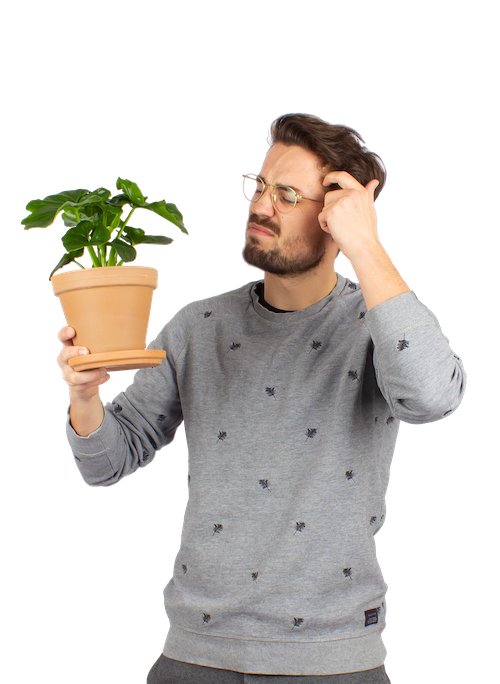Prrrooommm!! (is that the sound an elephant makes?). This week's plant spotlight is shining on our beautiful tropical amigo the Alocasia! Also called Elephant Ear plants, Alocasias like Tiki, Aku Aku, and Hillary are known for their large, unique leaves that can grow up to 5-6 feet tall in the wild. And that's not the only thing that makes them special. So without further ado, let's go learn about the Alocasia!
>Check out all of our Alocasia plants!
Attack of the clones
Alocasia plants originate from the tropical forests of Asia and Australia. But due to their widespread popularity and ability to clone easily, many types of Alocasias are cultivated throughout the world. Our friend Tiki is a good example. Although Tiki is called Alocasia Amazonica or the African Mask, he is not from the Amazon and has little relation to Africa. Instead, Tiki was created in a nursery in Florida. Oh, Tiki...

A (very) deep sleeper
Similar to animals who hibernate, it's common for wild Alocasia plants to die back during the colder months and then re-sprout in the spring. This is much less common in the home where temperatures are kept higher in the winter, but it can happen if your plant gets too cold. If you notice that your plant begins to die back during the colder months, don't panic. Place it in a warm spot and reduce any amount of water and fertilizer until the spring. Once it is warmer outside, your Alocasia should begin to grow back as usual.

The elephant in the room...
Surprisingly, there are three other genera of plants (Colocasia, Caladium and Xanthosoma) which are also known as elephant ears. All four come from the Araceae family and there's definitely a lot of family resemblance. While Caladiums can be more easily distinguished by their brightly coloured leaves, it can be harder to tell the difference between Alocasia and the other two genera of plants. But there is one major difference between the three...
Taro?
Yes, taro! The delicious purple food comes from the root corms (bulbs) of Colocasia and Xanthosoma plants. Most parts of Colocasia and Xanthosoma plants are edible, although they often have to be cooked first. In contrast, our Alocasia amigos are toxic and trying to make taro out of their root corms will result in a very upset and swollen stomach. Prrroooommm!! (sorry, last one).
Know how an elephant actually sounds? Or have any other plant-related questions/concerns? Let us know at hello@plantsome.ca | Facebook | Instagram!













